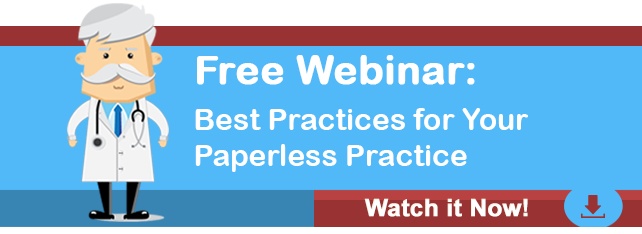
Many health care providers are realizing the advantages of transitioning to electronic medical records (EMR). However, there are a number of important things about EMRs, and the process of going paperless that need to be understood in order to ensure a successful transition. To this end, we’re hosting a free webinar to help those in the health care industry familiarize themselves with the ins and outs of electronic medical records, how to comply with EMR regulations, and management of the conversions process.
The Purpose of Electronic Medical Records
In Ontario, the EMR Specification outline particular requirements that EMR offerings must meet in order to be eligible under the EMR Adoption Program administered via eHealth Ontario. These include baseline requirements, data portability requirements, and a number of additional requirements. Certain information must be included in the EMRs, including but not limited to:
-
Patient demographics
-
Encounters, problem lists, allergies and immunizations
-
Prescriptions
-
Lab results
-
Medical alerts and special needs
-
A record of preventive care/screening activities
-
Ability to modify the medical record to ensure accuracy
-
And more
To learn more about the EMR Adoption Program and specific requirements therein, visit OntarioMD.
The Transition Process
Many health care providers struggle with making the transition to electronic medical records. This isn’t surprising given how complex the process can be. Typically, the main focus of EMR rollouts has been on capturing data day forward (in other words, only new data) either digitally at the source or through on-demand scanning. This means that many clinics and offices are left with large collections of paper charts and are struggling with what to do with them. Scanning such records into an EMR system using the typical day forward process is slow and time consuming because they are not designed for batch scanning.
Our webinar will help health care providers understand our process for helping to make the transition more efficient. In particular, we will touch on professional lever batch scanning to either bulk import records into existing EMR systems, or importing through integrated document management software that is linked back to EMRs. This is a much more efficient way to convert and maintain historical patient charts that meet EMR requirements.
